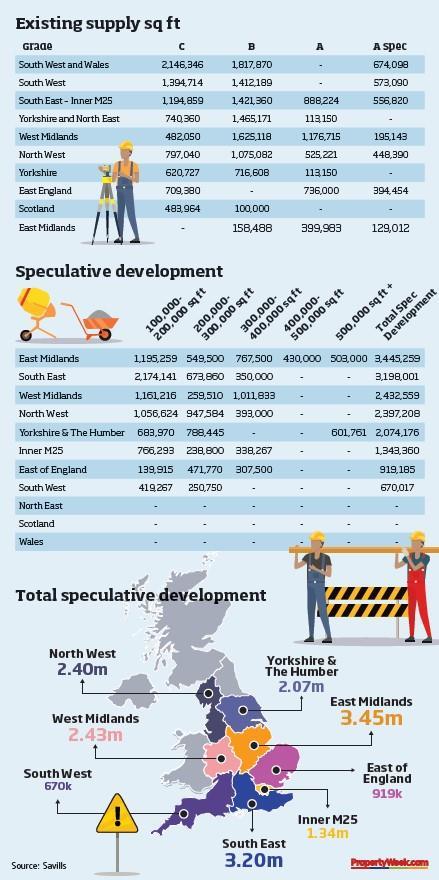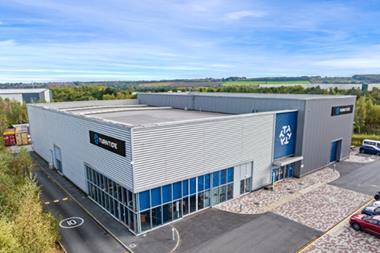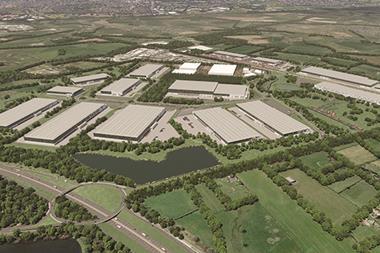More speculative construction of industrial and logistics buildings across the UK is needed to meet a continued surge in demand for space from occupiers and investors, according to data from Savills.

Its numbers show that in 2021, the levels of capital deployed into the UK industrial and logistics market has already surpassed £10.8bn, beating the £10.2bn spent in the whole of 2020. With vacancy rates at just 3.33%, quoting rents have grown by as much as 15% in some key locations and values have also risen, with prime yields now standing at 3.25%.
‘With such fierce competition for the best-quality assets, investors are having to look into alternative strategies and examine their attitude to risk in order to access the market,” says Will Laing, industrial and logistics research analyst at Savills.
“One potential option is speculative development. From our survey results with the investment community, we know that a significant percentage of their capital allocation for the sector could be utilised for speculative projects. Occupational market statistics certainly support this strategy, with our research showing that most markets are seeing vacancy rates continue to decline, rising levels of requirements and above-average take-up.”
Laing says that at present there is 16.48m sq ft of industrial and logistics space under construction nationwide, with the majority of development concentrated in the East Midlands and the South East.
“Yet a number of well-documented challenges currently exist in sourcing building materials, meaning barriers for new entrants remain high,” says Laing. “The map [see right], however, highlights the concentration of speculative development projects, suggesting that those areas with smaller amounts of development could be future targets for investors. However, it is important to note that right now core markets are also under provisioned.”
Laing says another way that investors could access the industrial and logistics market is through redevelopment opportunities. “This could involve purchasing short-dated income or acquiring grade-B and grade-C units with vacant possession that are on the market,” he says.
“With 8.57m sq ft of grade-C available at present, and with decreasing levels of grade-A supply, this could be a good way of achieving higher total returns, which remains a key criteria, followed by longer-term capital appreciation.”
I&L space shortage points to an uncertain future
- 1
- 2
- 3
- 4
- 5
 Currently reading
Currently readingTime to ramp up spec space development
- 6
- 7
- 8
- 9





































No comments yet